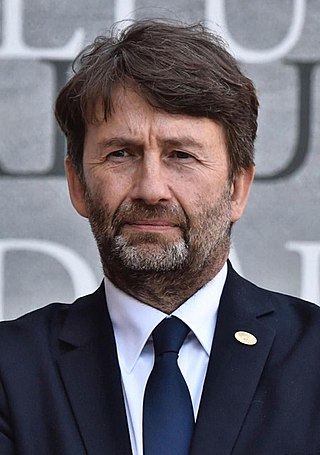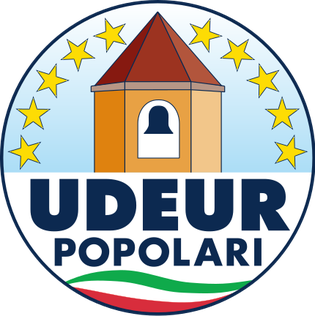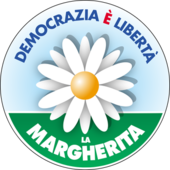
Christian Democracy was a Christian democratic political party in Italy. The DC was founded on 15 December 1943 in the Italian Social Republic as the nominal successor of the Italian People's Party, which had the same symbol, a crusader shield. As a Catholic-inspired, centrist, catch-all party comprising both centre-right and centre-left political factions, the DC played a dominant role in the politics of Italy for fifty years, and had been part of the government from soon after its inception until its final demise on 16 January 1994 amid the Tangentopoli scandals. Christian Democrats led the Italian government continuously from 1946 until 1981. The party was nicknamed the "White Whale" due to its huge organisation and official colour. During its time in government, the Italian Communist Party was the largest opposition party.
Liberalism and radicalism have played a role in the political history of Italy since the country's unification, started in 1861 and largely completed in 1871, and currently influence several leading political parties.

The Christian Democratic Centre was a Christian-democratic political party in Italy from 1994 to 2002. Formed from a right-wing split from Christian Democracy, the party joined the centre-right coalition, and was a member of the European People's Party (EPP).

The Italian People's Party was a Christian-democratic, centrist and Christian-leftist political party in Italy. The party was a member of the European People's Party (EPP).

The Democrats was a centrist and social-liberal political party in Italy.

Italian Renewal was a centrist and liberal political party in Italy.

The Democratic Union for the Republic was a short-lived Christian-democratic and centrist political party in Italy.

The Segni Pact, officially called Pact of National Rebirth, was a Christian-democratic, centrist and liberal political party in Italy. The party was founded and named after Mario Segni, a former member of the Christian Democrats who was a prominent promoter of referendums.

The Pact for Italy was a centrist political and electoral alliance in Italy launched by Mario Segni and Mino Martinazzoli in 1994.
Rutelliani referred to the followers of Francesco Rutelli, a former leading member of the Democratic Party, and later leader of Alliance for Italy. The followers of Rutelli were mainly centrists who wanted the party to be modelled on the Democratic Party of the United States and to join the Alliance of Liberals and Democrats for Europe and the Alliance of Democrats. They included both liberals and Christian-democrats.
The Populars is a loose association within the Democratic Party (PD), a political party in Italy.
Liberal PD is a social-liberal faction within the Democratic Party (PD), a political party in Italy. The aim of the group is to promote liberal ideas within the party and elect liberal candidates. The faction, through the Italian Liberal Group, is an observer member of the Liberal International.
Franceschiniani refers to the followers of Dario Franceschini, a leading member of the Democratic Party (PD), a political party in Italy.

Dario Franceschini is an Italian lawyer, writer, and politician, member of the Democratic Party (PD), of which he briefly became leader in 2009. Franceschini served as Minister of Cultural Heritage and Activities and Tourism, a position that he held from February 2014 to June 2018 and again from September 2019 to October 2022, making him the longest-serving cultural heritage minister in the history of the Italian Republic. Franceschini also served as Minister for Parliamentary Relations from 2013 to 2014.
The Free Democrats were the centrist faction within the Democratic Party (PD), a political party in Italy, around Francesco Rutelli, former leader of Democracy is Freedom – The Daisy, one of the two main parties that merged to form the PD in 2007.
Fourth Phase is a faction within the Democratic Party (PD), a political party in Italy.

Alliance for Italy was a centrist political party in Italy.

The Union of Democrats for Europe, also known as UDEUR Populars, was a minor centrist, Christian-democratic political party in Italy.
The centre-left coalition is a political alliance of political parties in Italy active under several forms and names since 1995, when The Olive Tree was formed under the leadership of Romano Prodi. The centre-left coalition has ruled the country for more than fifteen years between 1996 and 2022; to do so, it had mostly to rely on a big tent that went from the more radical left-wing, which had more weight between 1996 and 2008, to the political centre, which had more weight during the 2010s, and its main parties were also part of grand coalitions and national unity governments.













